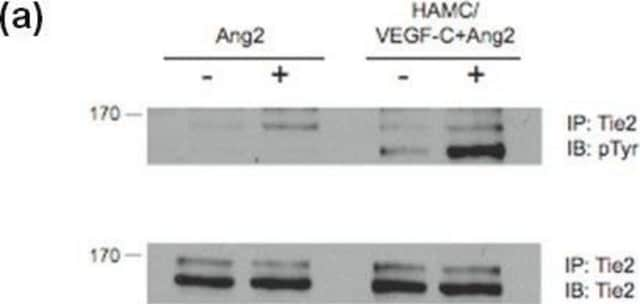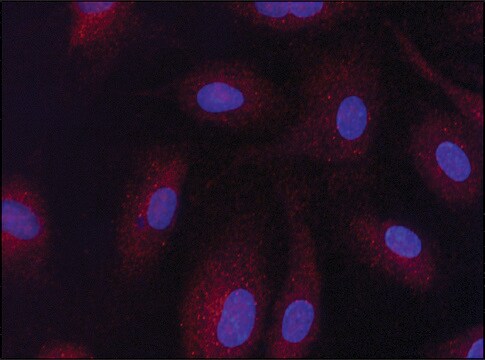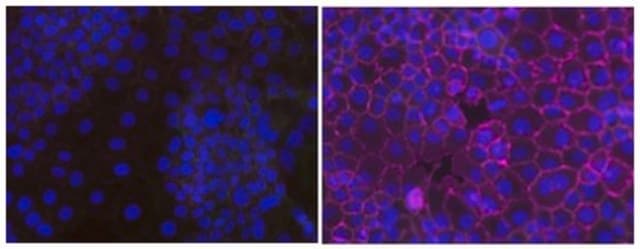05-777
Anti-Phosphotyrosine Antibody, recombinant clone 4G10®
clone 4G10®, Upstate®, from mouse
Wybierz wielkość
10 690,00 zł
Przewidywany termin wysyłki05 marca 2025Szczegóły
Wybierz wielkość
About This Item
10 690,00 zł
Przewidywany termin wysyłki05 marca 2025Szczegóły
Polecane produkty
pochodzenie biologiczne
mouse
Poziom jakości
forma przeciwciała
purified immunoglobulin
rodzaj przeciwciała
primary antibodies
klon
4G10®, monoclonal
reaktywność gatunkowa
vertebrates
producent / nazwa handlowa
Upstate®
metody
immunoprecipitation (IP): suitable
western blot: suitable
izotyp
IgG2bκ
Warunki transportu
wet ice
docelowa modyfikacja potranslacyjna
phosphorylation (pTyr)
Opis ogólny
Immunogen
Zastosowanie
Jakość
Opis wartości docelowych
Postać fizyczna
Komentarz do analizy
Positive Antigen Control: Catalog #12-302, EGF-stimulated A431 cell lysate. Add 2.5µL of 2-mercaptoethanol/100µL of lysate and boil for 5 minutes to reduce the preparation. Load 20µg of reduced lysate per lane for minigels.
Informacje prawne
Nie możesz znaleźć właściwego produktu?
Wypróbuj nasz Narzędzie selektora produktów.
polecane
Kod klasy składowania
12 - Non Combustible Liquids
Klasa zagrożenia wodnego (WGK)
WGK 2
Temperatura zapłonu (°F)
Not applicable
Temperatura zapłonu (°C)
Not applicable
Certyfikaty analizy (CoA)
Poszukaj Certyfikaty analizy (CoA), wpisując numer partii/serii produktów. Numery serii i partii można znaleźć na etykiecie produktu po słowach „seria” lub „partia”.
Masz już ten produkt?
Dokumenty związane z niedawno zakupionymi produktami zostały zamieszczone w Bibliotece dokumentów.
Active Filters
Nasz zespół naukowców ma doświadczenie we wszystkich obszarach badań, w tym w naukach przyrodniczych, materiałoznawstwie, syntezie chemicznej, chromatografii, analityce i wielu innych dziedzinach.
Skontaktuj się z zespołem ds. pomocy technicznej







